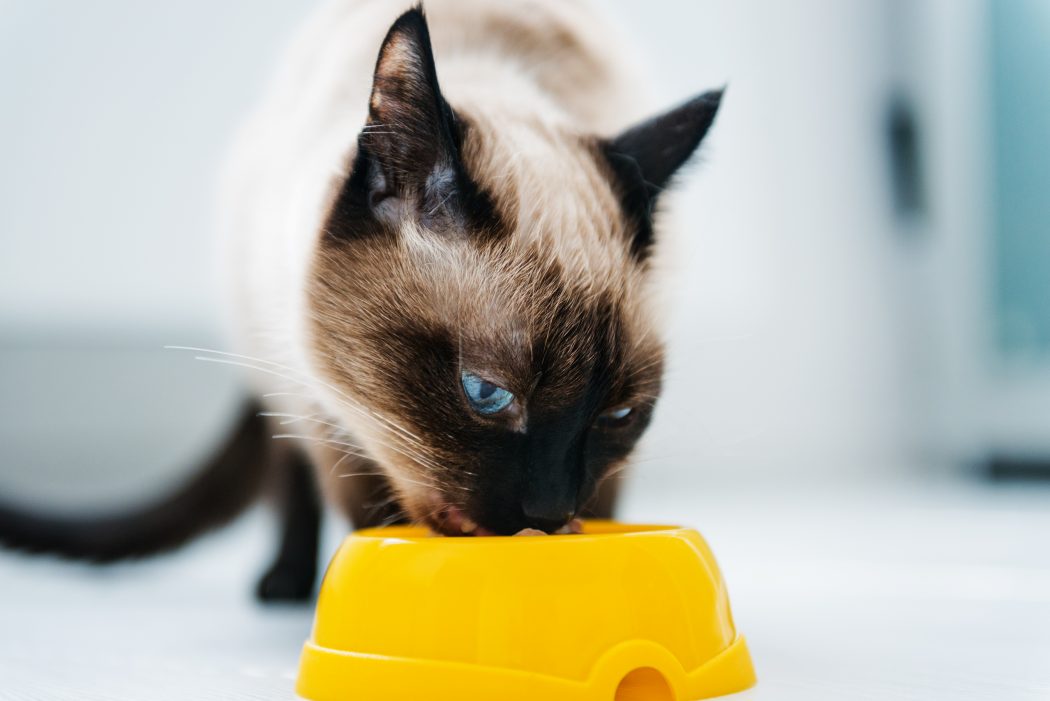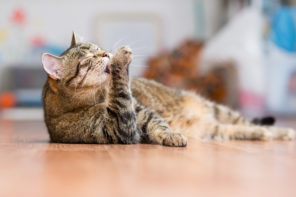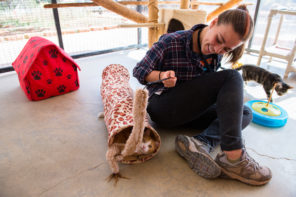Just as you need proper nutrition to fuel your outdoor excursions, so does your cat. But with the variety of cat foods on the market, choosing the right one can be overwhelming. To help simplify the process, we talked to Nestlé Purina PetCare’s animal nutritionist Dr. Christina Germain and veterinarian Dr. Zara Boland who provided us with five tips to help your adventure cat get proper nutrition.
1. Select a food that fits your cat’s life stage and lifestyle.
The first step in selecting the right food for your cat is to consider your pet’s age and activity level. Do you have a newly adopted kitten? A senior cat? An overweight kitty?
“Look for complete and balanced nutrition appropriate for life stage and lifestyle,” said Dr. Germain. “If you have a kitten, choose a kitten food for healthy growth and development. If you have an indoor cat, choose an indoor diet for reduced activity or reduced metabolism due to spay/neuter. If you have a senior cat 7 years or older, choose a senior diet for helping with weight control and changes in digestive capabilities, as well as internal aging changes that may not be immediately visible.”
Also, take your cat’s health into consideration, and be sure to consult your veterinarian if you have any concerns about your cat’s diet.
“It is important to consider age, existing health conditions (e.g. diabetes, urinary tract health), reproductive status (i.e. intact, spayed/neutered, pregnant, lactating), body condition (over or underweight, normal), body size (e.g. a large cat such as a Maine Coon vs a normal domestic long/short hair cat) and activity level (sedentary or very active),” said Dr. Boland.
2. Consider both wet and dry foods.
“There are many forms of foods that are complete and balanced with the two most popular types being wet and dry cat foods. Wet food is an easy way to ensure your cat stays hydrated along with always providing a constant supply of fresh water. Your cat may have a preference for one or the other or both,” said Dr. Boland.
3. Read those labels.
It’s important to read nutrition labels and ingredient lists for your kitty’s food as well. Just like on your own food labels, ingredients are listed in order of quantity, so if the first ingredient on a cat food label is chicken, for example, then you know that the food’s largest ingredient component is chicken protein.
Also, when comparing within a certain type of food — trying to pick a dry food among several dry foods or a wet food among several wet ones — look at the products’ metabolizable energy (ME), which is essentially the energy left for your cat’s body to use once digestion is complete.
“Cats that are indoors, spayed, neutered, overweight or sedentary should be fed products with lower ME,” said Dr. Germain.
4. Follow instructions.
“Look at the feeding guidelines (on the food’s container) and ensure that you are feeding the recommended amount for your cat’s weight and body condition,” said Dr. Boland. “This is important as the feeding guidelines can vary by individual product and individual cat.”
5. Be prepared to change it up.
“Some cats may be quite happy eating a single food for a very long time and others may be more inclined toward variety,” said Dr. Boland. “If you do change the diet make sure to do so gradually to prevent digestive upsets.”
Do adventure cats require special food?
Given their activity level and the amount of time they spend outside, we asked our animal nutritionist if these special kitties needed a little something extra in their diet. But whether you have an adventure cat who climbs mountains or an indoor-only kitty who simply climbs into your lap, their basic nutritional needs are similar, according to Dr. Germain.
“No matter their lifestyle, it is vital that cats are being fed a nutritionally complete and balanced diet for their age and other factors because cats require more and unique nutrients in their food than either humans or dogs,” she said. “This is particularly important as we cannot guarantee what they may be supplementing their diets with when they’re outside. A nutrient of particular importance for an active lifestyle is protein because it is needed to build and maintain muscles as well as being their primary energy source, which is unique to cats.”
[separator type=”thin”]
We’ve partnered with @ProPlanCat to declare June 15th as National “Take Your Cat On An Adventure” Day to help you plan safe and fun adventures both you and your cat will love. Share your adventures using #MyGreatCat for a chance to be featured.




